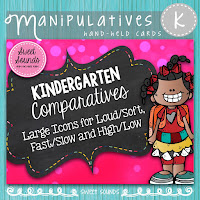Reading Melody
Teaching La with Beach Ball Fun!
Some of my primary students are learning about "la" this week. I love using the song Bounce High for "la" for the most obvious reason - the word "high" is on the highest pitch. My kids latch onto this song pretty quickly.
We start off by holding imaginary beach balls in our hands and moving them around as a vocal warmup. We transition into the song and move our imaginary beach balls to the melodic contour (middle-high-middle-low) as we sing the lyrics. Check out the process here.
It's GREAT having a ton of beach balls on hand, because you can use them for so many things! I use them for composition, brain breaks, even other songs like Plainsies, Clapsies.
During the presentation lesson (this week), we play Kings and Queens to individually assess who can say the words correctly, use the correct hand-signs and match pitch - all as a solo! Those students who "hit the bullseye" with their voices get their name written on the board in my fanciest handwriting.
Side Note: Kings & Queens is literally the most simple *game* ever! I say, "We're going to play Kings & Queens. Whoever repeats the melody back to me correctly will get their name written on the Kings & Queens list!"
Then I go around the room checking to see if students can correctly echo the melody (with hand signs!), matching pitch and saying the correct syllables. If they get it perfect, their name gets written on the board in my fanciest handwriting. (I write in my swirliest, fanciest print and they love it!)
Then we move on to notation - After reading on the tone ladder, we label the solfege "with the sticks," on rhythm stick notation:
Transforming melodies: After reading this with our hand-signs, I say, "That's tooooo easy! Close your eyes!" And add more so's, mi's and la's. Check it out below:
Listening Lesson
Reading Sixteenth Notes with Rakes of Mallow!
Formation: Single Circle, holding hands
Phrase 1: Circle to the right, 16 beats
Phrase 2: Circle to the left, 16 beats
Phrase 3: Drop hands, jump 2x, clap 2x, 4 "baby steps" into the center, 4 "baby steps" back to your spot.
Phrase 4: Repeat phrase 3
After a week of dancing, it's fun to read the rhythms (section A has a simple takadimi pattern; section B has a simple tadimi pattern!) and listen to an arrangement by Leroy Anderson.
Want more ideas? Check out the Rake of Mallow resource in my TpT Shop!
Kindergarten Comparatives
Reading Fast & Slow with Rabbits and Turtles
Kindergarten is getting ready to find out about Fast Beat and Slow Beat, so we have been preparing kinesthetically by moving like rabbits and turtles around the music room.
I start by telling the story of the tortoise and the hare. Then I pull out my rabbit and turtle visuals and we bounce/step in place, depending on which one I hold up. What are these visuals? - a picture of a rabbit and a picture of a turtle!
Next, I use my finger to draw a "laser line" around the movement area - don't go past the laser line or you'll get zapped and have to sit out!
Then we practice (just the boys or just the girls) moving around the room like rabbits while singing a song and I play a drum to keep them on the beat. I say, "Let's move like rabbits!" or "Turtle arms ready!" before we do each one. This solidifies the idea in their brains while they are moving fast or slow with their bodies.
The next week (this past week!) I tell them, "We're going to move like rabbits and turtles again. But this time, I'm not going to tell you which one we're doing, I'm going to play a secret code on my drum and you have to figure out which one we're doing." This helps me assess which ones have it and which ones don't, without too much embarrassment. If they don't do it correctly, they quickly look around at their peers and switch.
Pro Tip: Let's talk about documentation! While they are moving around the room, I am looking for the ones that "get it" and those who are following their friends. I keep a clipboard in my room with a stack of rosters. Each time we do an activity that I want to track, I give each child a score of 3 (got it!), 2 (almost!) or 1 (not yet!).
After that kinesthetic review, I move on to aural questioning (document this too!) - I go straight down my roster and let each kid answer "turtle" or "rabbit" while I play the drum. This should happen very quickly & can be done in one class.
Next week, we will move on to visual prep, where I will do the same thing (play the secret code on the drum) but they will have to hold up their rabbit or turtle card and show me which one they hear. It's a fun time to be in Kindergarten music! :-)
Grab my rabbit and turtle cards in my TpT shop here!













Great ideas! I love Bounce High, Bounce Low too! #ThreeThings
ReplyDeleteThanks for linking up, Lori! I love that recording of "Rakes of Mallow"! And the turtle and rabbit idea is terrific!
ReplyDelete